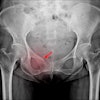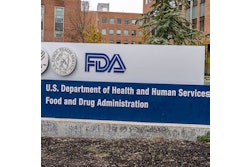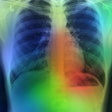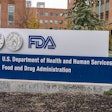Imaging AI startup Clairity has received U.S. Food and Drug Administration (FDA) de novo authorization for Clarity Breast, an AI-based software platform designed to predict a woman’s future breast cancer from a screening mammogram.
 Connie Lehman, MD.
Connie Lehman, MD.
Unlike computer-aided detection or computer-aided diagnosis software, Clairity Breast is not meant to be included in the radiologist’s interpretation process. After separately analyzing the mammogram, the software generates a five-year risk prediction percentage that can then be provided to patients.
Clairity was founded in 2020 by breast imaging specialist Connie Lehman, MD, of Mass General Brigham, with funding support from Sante’ Ventures and ACE Global Equity.
“I realized that it was time to do more than just look for current disease on the mammogram and really leverage the full spectrum of the hidden clues in that mammogram for every woman that predict her future risk of breast cancer,” Lehman told AuntMinnie. “I think this is a new domain where I see the power of the image goes beyond the disease now and moves into this domain of predicting the future of a patient’s health.”
 Clinical workflow with Clairity Breast. Graphic courtesy of Clairity.
Clinical workflow with Clairity Breast. Graphic courtesy of Clairity.
Early on, Clairity formed what it calls the Clairity Consortium, in which the company collaborated with academic and community centers as well as the German Mammography Screening Program. With help from the consortium, Clairity Breast’s AI model was trained on over 450,000 mammograms. The algorithm was then validated on more than 77,000 mammograms with five-year outcome data acquired at five geographically distinct hospital-based and freestanding screening centers, according to the company.
Better risk assessment
The firm believes Clairity Breast will deliver better results than current breast cancer risk-prediction models, which were developed over 50 years ago and relied largely on European Caucasian women, Lehman said.
“And that’s been a hindrance,” she said. “We haven’t seen them generalize as well as we had hope to women who identify as Asian, Black, [or] Hispanic. So the models that we’re developing, we’re ensuring that the data going in is representative of the diversity of patients who will be using it.”
Also, traditional risk-prediction models rely significantly on family history. However, 85% of women diagnosed with breast cancer do not have a family history of breast cancer, Lehman noted.
“And that 85% of what we think of as sporadic breast cancers, that’s what we’re trying to find and identify,” she said. “The domain that we’re really focused on is one, making sure that the models that we’re building apply to the full diversity of women at risk for breast cancer. And two, going beyond family history and reproductive health that have fueled the traditional risk models and leveraging the power of the image.”
Several abstracts on the performance of Clairity Breast have been submitted for presentation at RSNA 2025, Lehman said.
Future plans
Clairity Breast is currently available only for use with 2D images acquired on mammography systems from Hologic, but Clairity plans to expand the technology in the future.
“We’re very excited at the company for our future models and the work through the FDA that we’ll be doing to make this multivendor and to have it applied in 3D as well as 2D,” Lehman said.
Initially, Clairity will focus on the U.S. market and is holding discussions with potential distribution partners. However, the Boston-based company, which is led by CEO Jeff Luber, will also seek to bring Clairity Breast to Europe and Canada in the future, Lehman said.
“Ten years from now, it’s going to be astonishing to our radiology residents that we weren’t using images to predict patients’ future risk,” Lehman said.



















